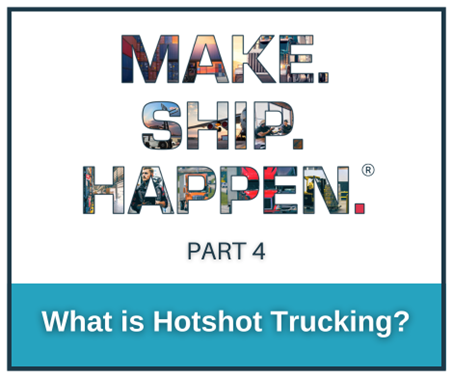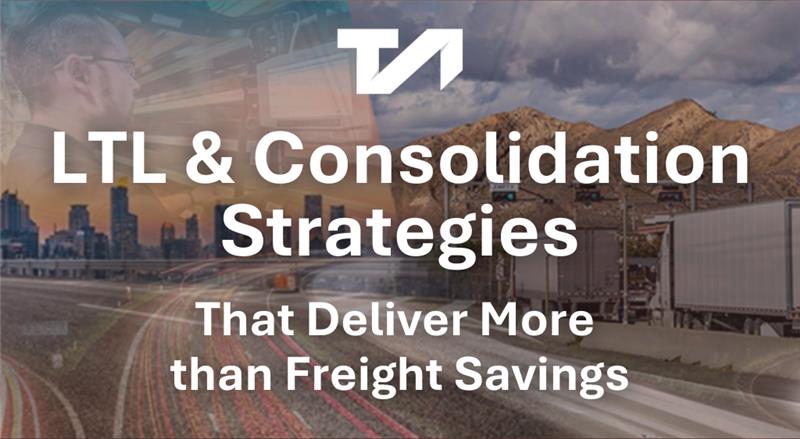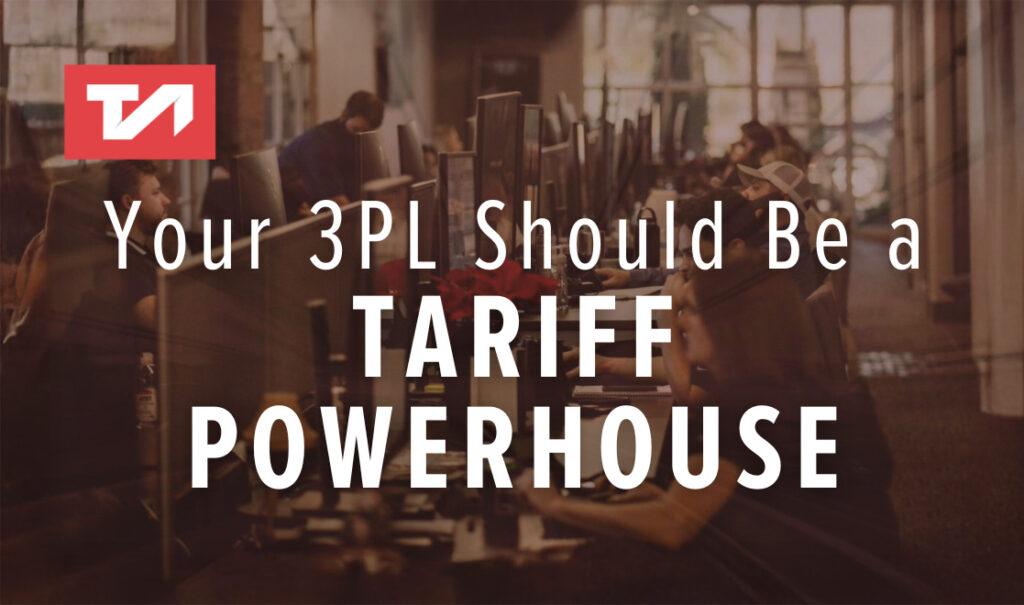Jun 14, 2023
Make.Ship.Happen.® Part 4: What is Hotshot Trucking?

Welcome back to our Make.Ship.Happen.® series. Last time, we shared a look into how we approach technology in the logistics industry as a people-first business. Today, we’re diving into a growing shipping service: hotshot trucking.
In recent years, LTL carriers have been inundated with an overabundance of business. And so, in an effort to eliminate those low-margin loads and lighten the capacity constraints, there has been a recent change to the rules tariff that adds a surcharge for unique LTL loads extending beyond eight feet long. This change and added surcharge has motivated shippers to look for more creative shipping solutions to move time-sensitive, smaller LTL loads — especially for commodities that extend beyond eight feet. As a result, hotshot is becoming more popular in the logistics industry as a valuable solution for shippers.
We know that not every shipper has experience with hotshot trucking services, so we sat down with our resident hotshot experts, Reo Hatfield (VP of Corporate Services) and Chris Bahr (Executive VP and Chief Information Officer), for a lesson in hotshot requirements and services.
What is hotshot trucking?
Originating in the ’70s, the term “hotshot” referred to pickup trucks that quickly delivered critical parts to excavation operations. Today, hotshot trucking refers to a service in which smaller, specialized vehicles are used to haul small, time-sensitive, and unique LTL freight. While some hotshot loads may be short haul deliveries, others may be transported across many state lines and even sometimes overseas. No matter the intended destination, these hot loads must be delivered immediately with zero touchpoints and at a reasonable cost.
What are the benefits of shipping via hotshot?
1. Time
Speed is one of the primary reasons shippers choose hotshot as a mode of transportation for their smaller freight. Because of their smaller size, hotshot trucks are typically more agile than traditional semi-trucks, allowing them to easily navigate through traffic and various delivery sites — making delivery deadlines in a shorter amount of time. Unlike LTL shipments, there are no other pickup or drop-off stops along the way, so the freight gets from point A to B in the most streamlined, expeditious fashion.
2. Flexibility
Because of the versatility of the smaller commercial vehicles, hotshot trucks can often access specific locations that larger van or flatbed trucks may not be able to reach, such as construction job sites. For shippers who are looking to transport their products to more remote or difficult-to-access areas, hotshot trucking services is a great option.
3. Cost Savings
These vehicles require less fuel to operate, which means lower operating costs for businesses. They’re also able to make deliveries in less time. Less time spent on the road results in fewer expenses for shippers.
4. Specialized Capabilities
Some shippers may think that the smaller size of hotshot trucks will limit the types of shipments they can be used for, but this is simply not true. Hotshot trucks are equipped to handle a wide range of cargo types, including oversized loads, temperature-sensitive goods, high-value freight, and hazardous materials.
5. Eco-friendly
Sustainability is important to a lot of shippers, and for the shipper looking to go green, hotshot equipment is the way to go. Because they discharge fewer emissions than traditional trailers, hotshot trucking is an eco-friendly transportation option for the environmentally conscious shipper. Reduce your carbon footprint and your shipping expenses at the same time? A win-win for any shipper!
6. Reduced Risk of Damage
Because hotshot loads are not handled after pickup or moved to make room for other products (like with LTL shipments), there is a significantly reduced risk of damage to the freight. This is a particularly good method of transportation for those shipping high-value or high-risk items.
What type of equipment is used for hotshot trucking services?
Hotshot truckers use straight trucks, sprinter vans, or pickups with trailers to haul loads. Most commonly, they use one-ton pickup trucks classified as “medium-duty.” These are generally classified as non-commercial vehicles and typically fall under Class 3, 4, or 5.
- Class 3: Ram 3500, GMC Sierra 3500, Ford E-350, Ford F-350
- Class 4: Ram 4500, GMC 4500, Ford E-450, Ford F-450
- Class 5: Ram 5500, GMC 5500, Ford F-550, Peterbilt 325
- Sprinter Vans: Typically able to haul up to 3,500 lbs.; hold less freight that is either high value or ultra time sensitive
- Straight Trucks: Max freight weight is 7,000-10,000 lbs.; also known as a cube truck, cube van, box van, or straight truck; carries cargo on the same chassis as the power unit and cab
The type of trailer used depends mainly on the kind of truck and the commodity that’s being shipped. Some of the common trailers used by a hotshot company include:
- Bumper Pull Trailers
- Gooseneck Trailers
- Tilt Deck Trailers
- Lowboy Trailers
- Dovetail Trailers
How do you know if hotshot trucking is the right choice for your shipment?
This is where TA Services comes in. If you’re looking for a cost-effective solution for shipping your smaller, time-sensitive or high value loads, our team can help you decide if hotshot or one of our other transportation services is the right fit.
Reach out to TA Services today to learn more about the benefits of shipping with hotshot and if this solution is right for your business needs.



